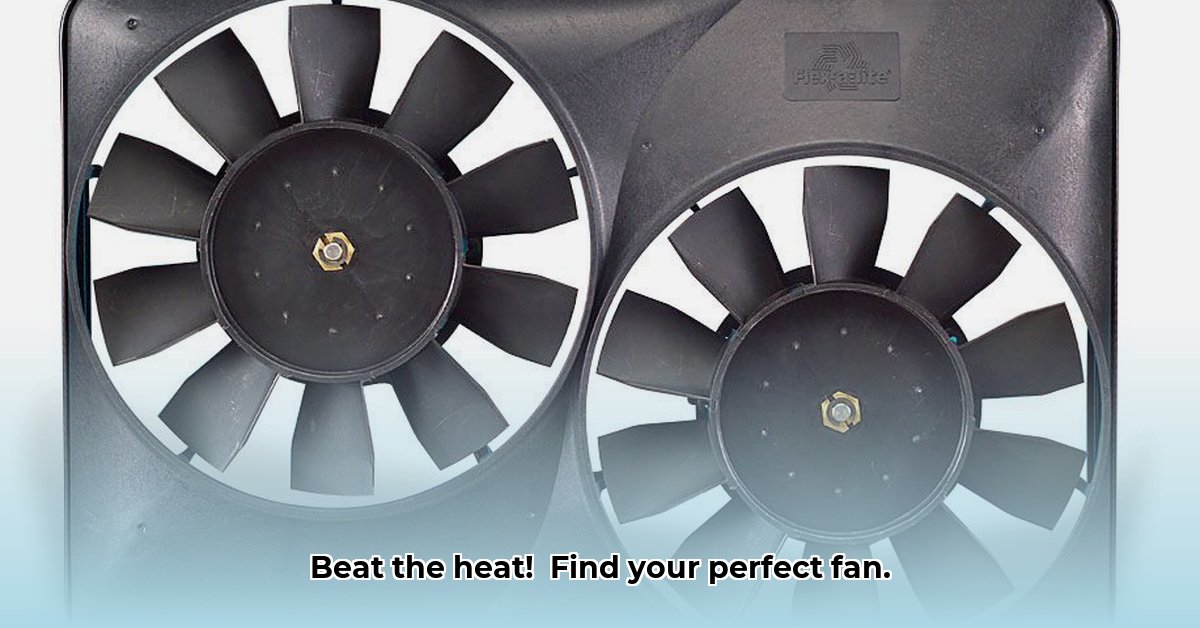“`markdown
Find the Best Electric Fan: Top Reviews & 2025 Buying Guide
Summer heat getting to you? Finding the right electric fan doesn’t have to be a chore. This guide breaks down everything you need to know to stay cool and comfortable, from understanding key features to our top recommendations for 2025. We’ll also delve into smart fan technology and explore options for every budget.
Electric Fan: Your Guide to Summer’s Coolest Breeze
Let’s cut through the noise and discover the perfect electric fan for your needs and budget. We’ll explore different fan types, essential features, and answer frequently asked questions to help you survive the summer heat. This guide provides information based on independent testing and user reviews.
Types of Electric Fans: Finding Your Perfect Match
The world of electric fans is diverse, with each type catering to different needs and spaces. Consider the following options for optimal cooling and air circulation:
- Box Fans: Sturdy and inexpensive, move air quickly. Great for windows and smaller rooms. May be louder than other models. Excellent for creating a focused airflow.
- Stand Fans: Versatile and portable, easy to move around and customize airflow with adjustable height and oscillation. A popular choice for bedrooms and living rooms. Some models include remote controls.
- Tower Fans: Sleek and slim, ideal for smaller rooms and apartments. Modern aesthetic with multiple speed settings. Often equipped with air purification features.
- Oscillating Fans: Even air distribution in larger rooms. Consistent and refreshing breeze throughout the space. Great for sharing cooling across multiple people.
- Ceiling Fans: Effective for circulating air and improving comfort. Low-energy option for long-term cooling solutions in conjunction with AC. Requires professional installation.
- Smart Fans: Integrate with smart home systems for voice control and automated operation. Can adjust speed based on room temperature.
Key Features to Consider: Getting the Most for Your Money
Choosing the right electric fan involves more than just personal style; consider the impact key features have on performance and satisfaction.
- Airflow (CFM): Cubic Feet per Minute measures air volume moved. Higher CFM generally means more powerful airflow for effective air circulation. Consider the room size when evaluating CFM.
- Wattage: Energy consumption of the fan. Lower wattage translates to lower electricity bills and long-term energy savings. Look for models with energy-saving modes.
- Noise Level (dB): Measured in decibels, lower values indicate a quieter fan. Important for nighttime use and noise-sensitive environments. Some fans feature “silent” modes.
- Energy Efficiency: Look for an Energy Star rating to indicate the fan meets energy efficiency standards for utility bill reduction. Check the Energy Star website for certified models.
- Smart Features: Timers and app controls increase convenience and customization. Some smart fans learn your preferences and adjust automatically.
- Safety Certifications (UL): Underwriters Laboratories certification ensures the fan meets safety standards for peace of mind. Check for other certifications such as ETL or CSA.
- Price: Establish a budget before shopping to narrow down your options. Balance features with affordability.
Top Fan Recommendations: Our Expert Picks
Here is a curated selection of top-performing fans across various categories. Consider them as possible options to help you determine your direction.
| Category | Model Example | Pros | Cons |
|---|---|---|---|
| Best Overall | Vornado 660 (example, Vornado 6303) | Powerful airflow, quiet operation, durable construction, whole room circulation. | Higher price point compared to budget models. |
| Best Energy-Efficient | Lasko 20″ Box Fan (example, Lasko 3733) | Low wattage, good airflow for the energy used, affordable price, simple design. | Might be less aesthetically pleasing than other options. |
| Best for Small Spaces | Honeywell HT-900 (example, Honeywell HTF090B) | Compact size, strong airflow for its size, adjustable fan head. | Can be somewhat noisy at higher speeds. |
| Best Budget-Friendly | Generic 16″ Oscillating (example, Mainstays) | Affordable price, decent airflow, easy to assemble. | May lack advanced features or high-quality construction. |
| Best Smart Fan | Dyson Purifier Cool (example) | Air purification, smart features, stylish design, powerful airflow. | Very expensive. |
Important Note: Models change frequently; check current reviews and ratings before purchasing an electric fan. Consult independent testing websites and customer feedback for the latest information.
Buying Guide Checklist: Your Step-by-Step Guide to Fan Selection
Follow our guide to make sure you buy with certainty:
- Assess Your Needs: Determine the room size you need to cool for greater energy savings. Consider multiple rooms if you plan to move the fan.
- Set Your Budget: Decide how much you’re willing to spend on a new electric fan. Factor in long-term energy savings.
- Prioritize Features: Decide which features matter most to you, oscillation, smart features, and noise levels. Rank your priorities.
- Check Safety Certifications: Look for UL or relevant safety certifications for safety and guarantee standards. Research the certifying agency.
- Read Reviews: Compare models based on user reviews and ratings for better buying direction. Look for patterns in reviews.
- Compare Warranties: Check the warranty offered by the manufacturer for each model.
Frequently Asked Questions (FAQ)
-
Q: How do I clean my electric fan?
A: Regularly dust the blades and motor housing with a soft cloth or brush. For tougher grime, use a damp cloth (ensure it’s not dripping wet and that the fan is unplugged). For plastic blades, consider using a mild detergent. -
Q: How long do electric fans last?
A: With proper care (cleaning, occasional lubrication), a quality electric fan can last for many years of continuous usage. The lifespan depends on the build quality and usage frequency. -
Q: Are electric fans energy-efficient?
A: Generally, yes. They consume significantly less energy than air conditioners, making them a cost-effective way to stay cool and lower utility costs. Look for Energy Star certified models for maximum efficiency. -
Q: Are smart fans worth the extra cost?
A: Smart fans offer convenience and potential energy savings through automation. However, they come at a higher price. Evaluate if the features justify the added cost.
This guide provides a solid foundation for your electric fan search based on quality, airflow, and efficiency. Remember, the perfect fan depends on individual preferences and needs. Explore your options, read reviews, and choose the one that promises the coolest, most comfortable summer! What are you waiting for? Beat the heat today!
How to Choose the Best Energy-Efficient Electric Fan for My Room Size
Before diving into specific models, let’s talk about your space. Choosing the best energy-efficient electric fan for my room size involves considering the square footage. The size of the fan is the most important thing to determine the coverage area for an electrical device. Improper fan area may affect the distribution of airflow in the room.
Key Takeaways:
- Fans use far less energy than air conditioners for cost savings. Consider the long-term impact on your electricity bill.
- Different fan types have varying energy efficiency levels for different power consumption. Research each type’s energy performance.
- Consider CFM, wattage, and noise levels when comparing models for the best fit for your room parameters. Optimize for both comfort and efficiency.
- ENERGY STAR certification indicates energy efficiency beyond model specifications. Trust the Energy Star label for verified performance.
- Smart features offer convenience and potential energy savings in the long term, but add costs to the purchase. Weigh the benefits against the initial investment.
Understanding Your Cooling Needs
Before diving into specific models, let’s talk about the variables of your room. How to choose the best energy-efficient electric fan for my room size involves considering the square footage for ultimate determination. The important thing to recognize is a small bedroom needs a different fan than a large living room to get the most air circulation. A larger room requires a fan with a higher CFM rating.
Types of Fans: Finding the Right Fit
Several fan types cater to various needs, each with its own pros and cons regarding energy efficiency for optimal temperature in the household:
- Box Fans: These budget-friendly workhorses are excellent for window ventilation, creating a through-draft for air consistency. They are simple and effective for smaller spaces.
- Stand Fans: Versatile and portable, these are a good all-around choice for many room sizes for optimal air circulation. Adjustable height and oscillation make them adaptable.
- Tower Fans: Slim and space-saving, they’re ideal for tight corners for convenience and smaller areas to cool. Their vertical design makes them less obtrusive.
- Ceiling Fans: Arguably the most energy-efficient option, these create a gentle breeze, ideal for supplementing air conditioning to reduce A/C costs. They require professional installation but offer long-term energy savings.
- Smart Fans: While potentially energy-efficient due to automated controls, the added
- Unearth ancient rome achievements: Engineering feats & legal legacies, examined - August 13, 2025
- Unlock ancient rome army ranks: Power, impact & legion command - August 13, 2025
- Conquer Your Exam: Ancient Greece Quiz Ace It Now! - August 13, 2025
















